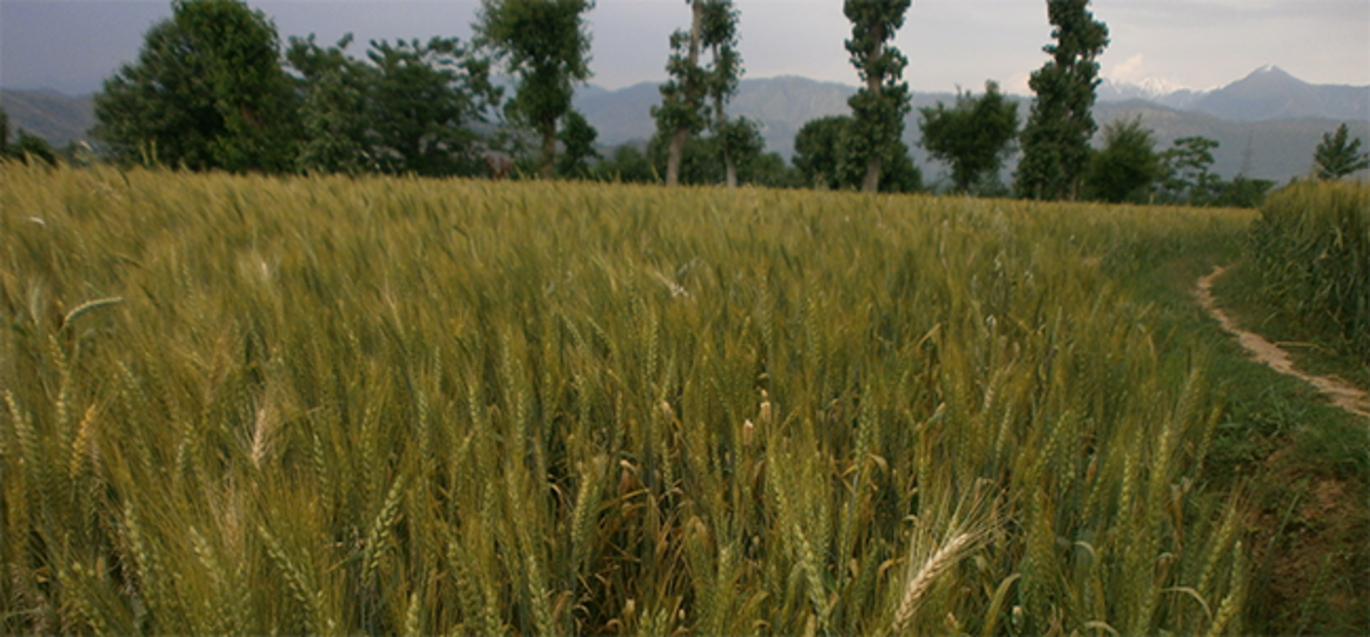New article: Origin, Migration Routes and Worldwide Population Genetic Structure of the Wheat Yellow Rust Pathogen Puccinia striiformis f.sp. tritici
This collaborative work between Denmark, France and Pakistan describe the worldwide population structure of wheat yellow rust and identifies the centre of diversity of the pathogen in Himalayan and near Himalayan regions.

Origin, Migration Routes and Worldwide Population Genetic Structure of the Wheat Yellow Rust Pathogen Puccinia striiformis f.sp. tritici / Sajid Ali, Pierre Gladieux, Marc Leconte, Angelique Gautier, Annemarie F. Justesen, Mogens S. Hovmøller, Jerome Enjalbert, Claude de Vallavieille-Pope
In: PLoS Pathog 2014, 10(1): e1003903.
doi: 10.1371/journal.ppat.1003903
Abstract
Analyses of large-scale population structure of pathogens enable the identification of migration patterns, diversity reservoirs or longevity of populations, the understanding of current evolutionary trajectories and the anticipation of future ones. This is particularly important for long-distance migrating fungal pathogens such as Puccinia striiformis f.sp. tritici (PST), capable of rapid spread to new regions and crop varieties. Although a range of recent PST invasions at continental scales are well documented, the worldwide population structure and the center of origin of the pathogen were still unknown. In this study, we used multilocus microsatellite genotyping to infer worldwide population structure of PST and the origin of new invasions based on 409 isolates representative of distribution of the fungus on six continents. Bayesian and multivariate clustering methods partitioned the set of multilocus genotypes into six distinct genetic groups associated with their geographical origin. Analyses of linkage disequilibrium and genotypic diversity indicated a strong regional heterogeneity in levels of recombination, with clear signatures of recombination in the Himalayan (Nepal and Pakistan) and near-Himalayan regions (China) and a predominant clonal population structure in other regions. The higher genotypic diversity, recombinant population structure and high sexual reproduction ability in the Himalayan and neighboring regions suggests this area as the putative center of origin of PST. We used clustering methods and approximate Bayesian computation (ABC) to compare different competing scenarios describing ancestral relationship among ancestral populations and more recently founded populations. Our analyses confirmed the Middle East-East Africa as the most likely source of newly spreading, high- temperature-adapted strains; Europe as the source of South American, North American and Australian populations; and Mediterranean-Central Asian populations as the origin of South African populations. Although most geographic populations are not markedly affected by recent dispersal events, this study emphasizes the influence of human activities on recent long-distance spread of the pathogen.